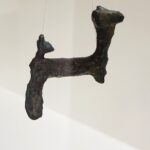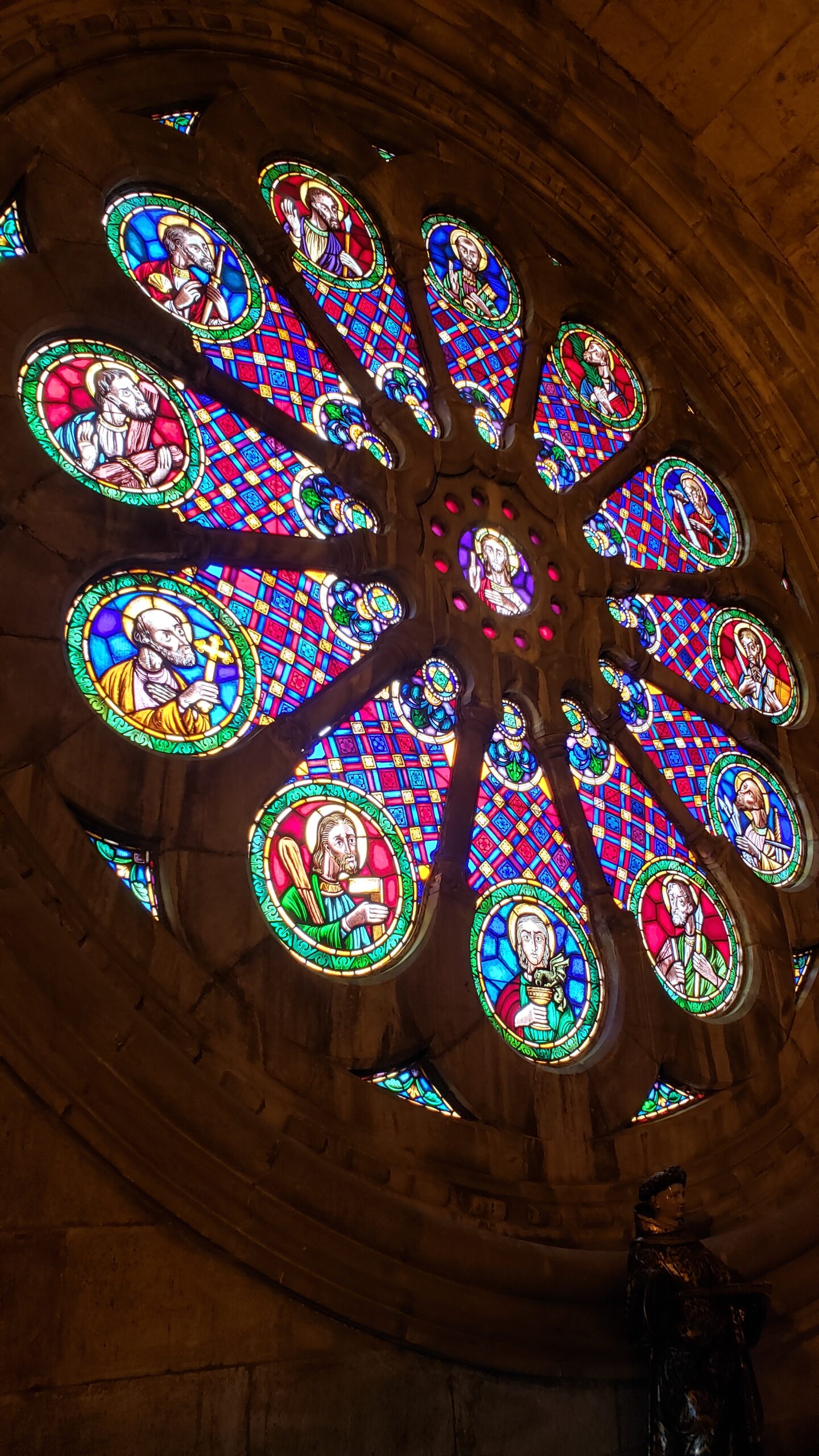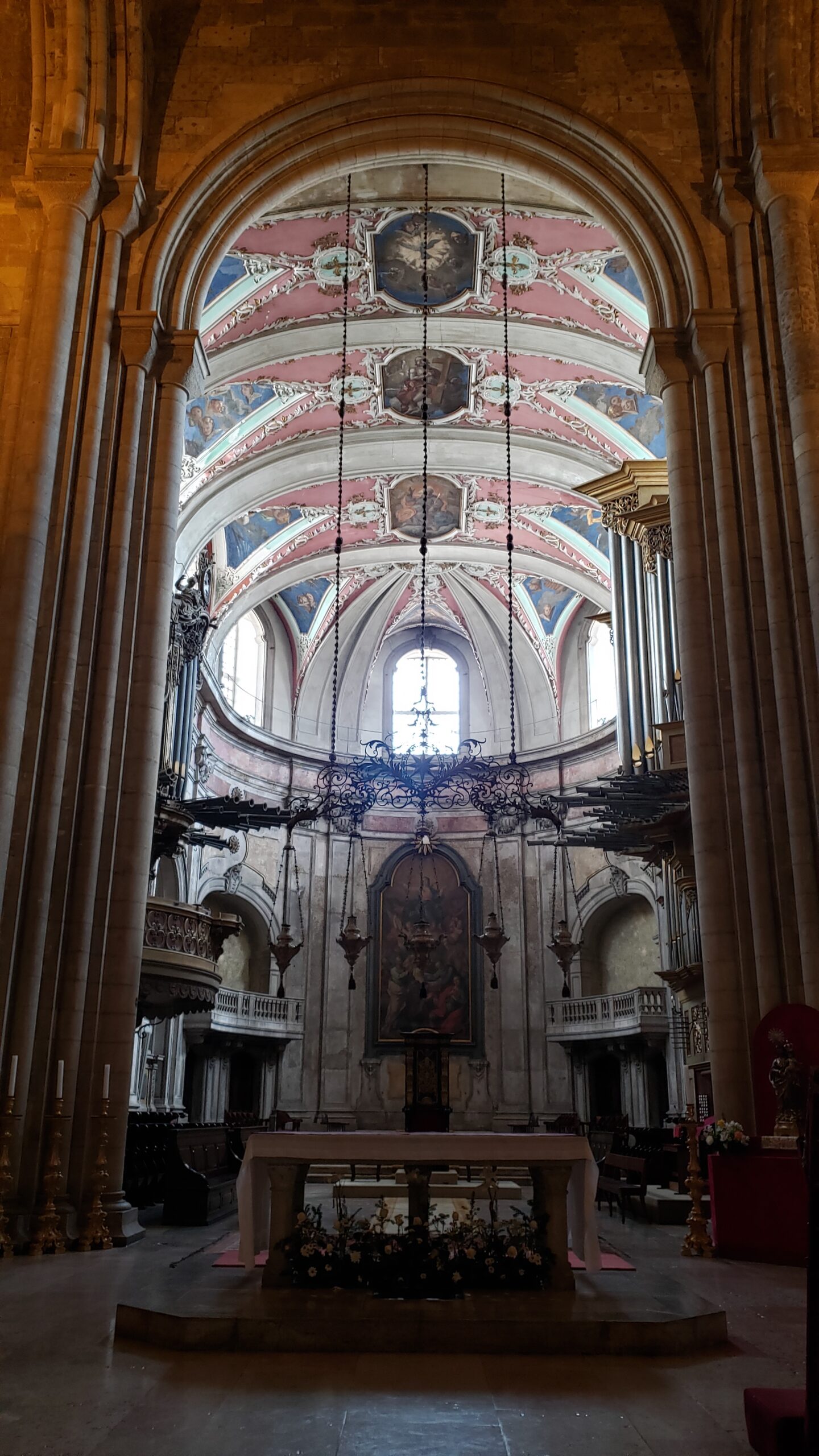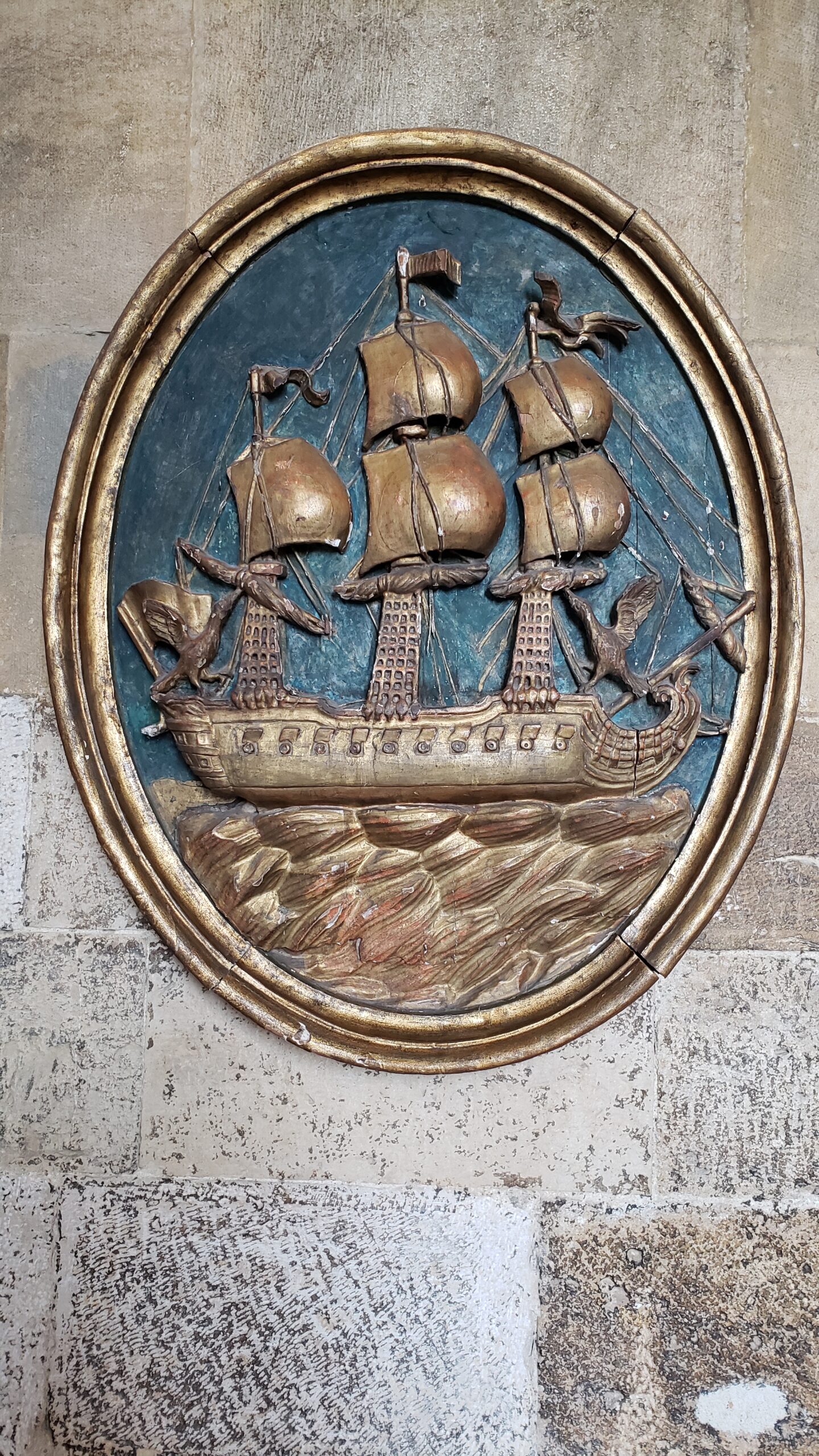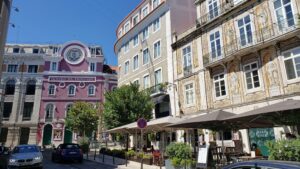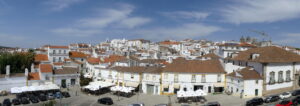In brief: Within a few meters walking in central Lisbon, one can turn back the time machine 2000 years, then fast forward to 800 years ago, before returning to recent times, the new city of the 18th century.
DATELINE…100AD – Teatro Romano
During the reign of Augustus, the city managers of Felicitas Iulia Olisipo demonstrated the power and glamor of Rome by constructing a 4000-seat semi-circular theatre high upon a hillside overlooking the Tagus River. This was the Roman mercantile city that is known today as Lisbon. Newly revealed after nearly 2000 years underground, the Teatro Romano excavation now blocks an old hillside street. Just five years ago an engaging museum full of artifacts and information enhanced the site. And you can still enjoy the imperial view over the Tagus from its terrace. Applause, please.
A further layer into the past: this tiny replica of an iron age deer, just a few centimeters long, dates from 300 to 400 years earlier and comes from the theatre site.
The main part of the theatre is below. In the museum, its retaining wall and some passageways are also visible.
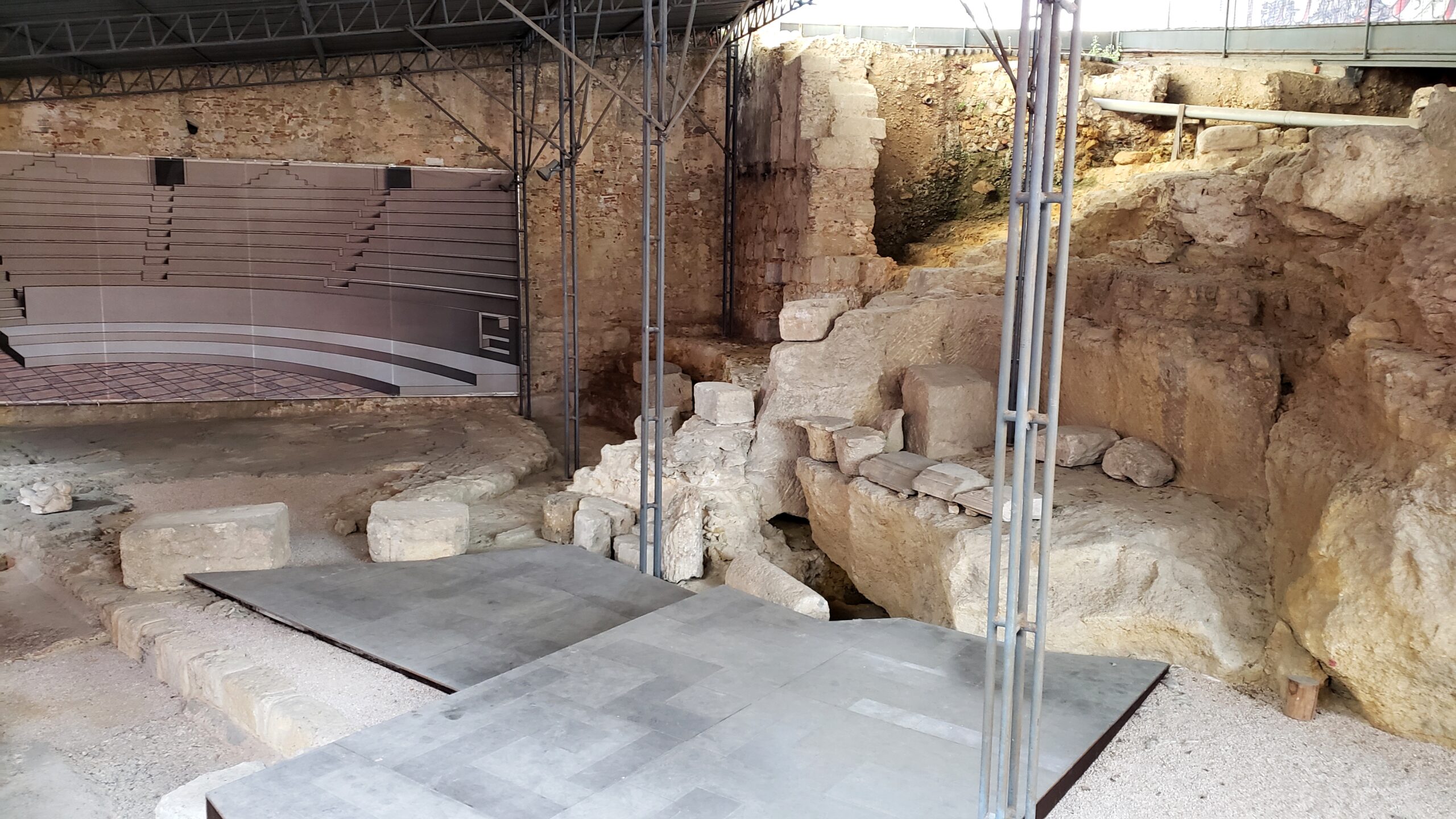
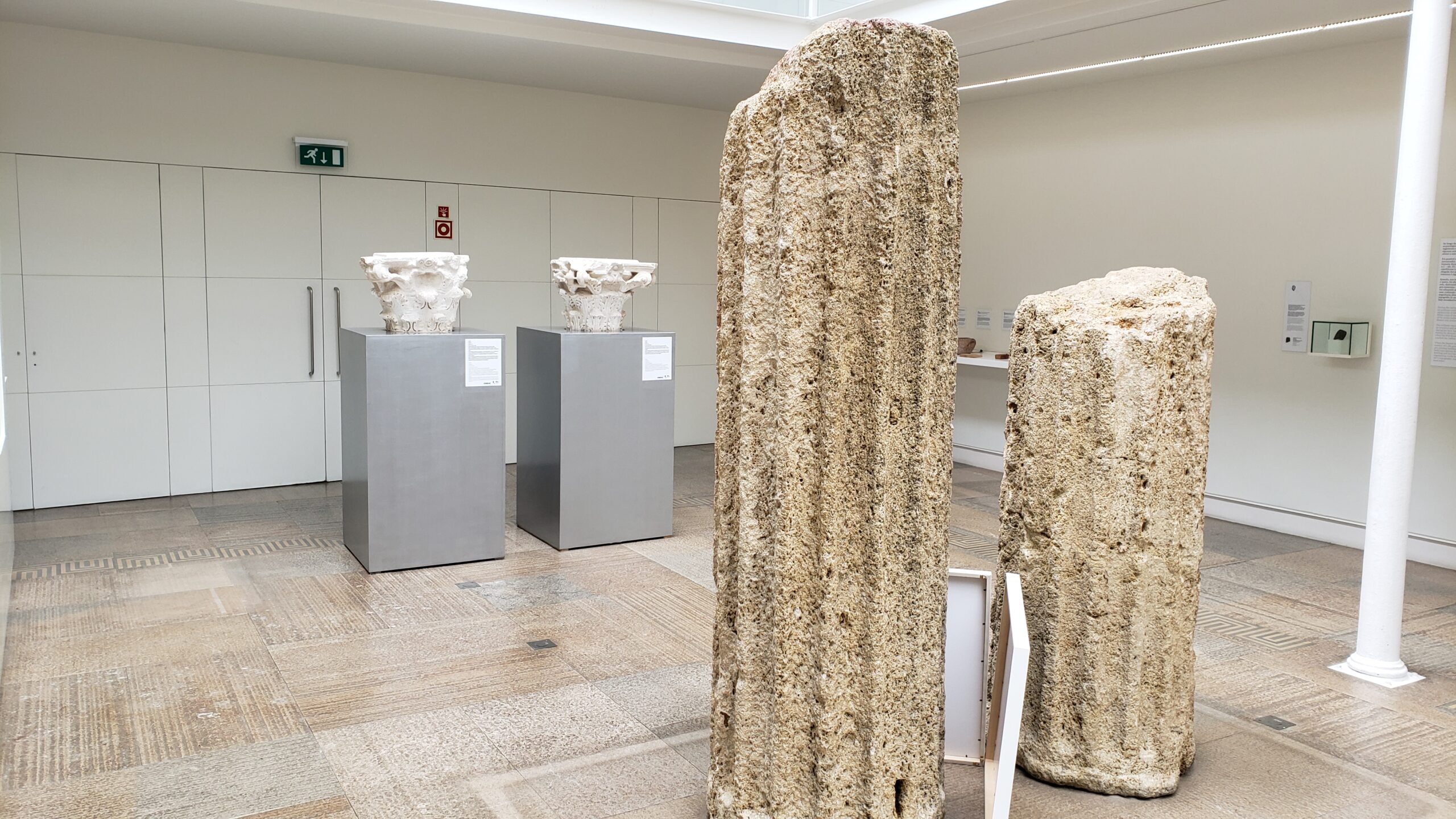
A huge pot, about human size, somehow survived site destruction, earthquakes, and subsequent building reconstruction.
A marble statue of Silenus, one of many that adorned the top of the theatre. This mythic character was quite a party-goer, but we hoped his wine-induced slumber was not typical of audiences of the time.
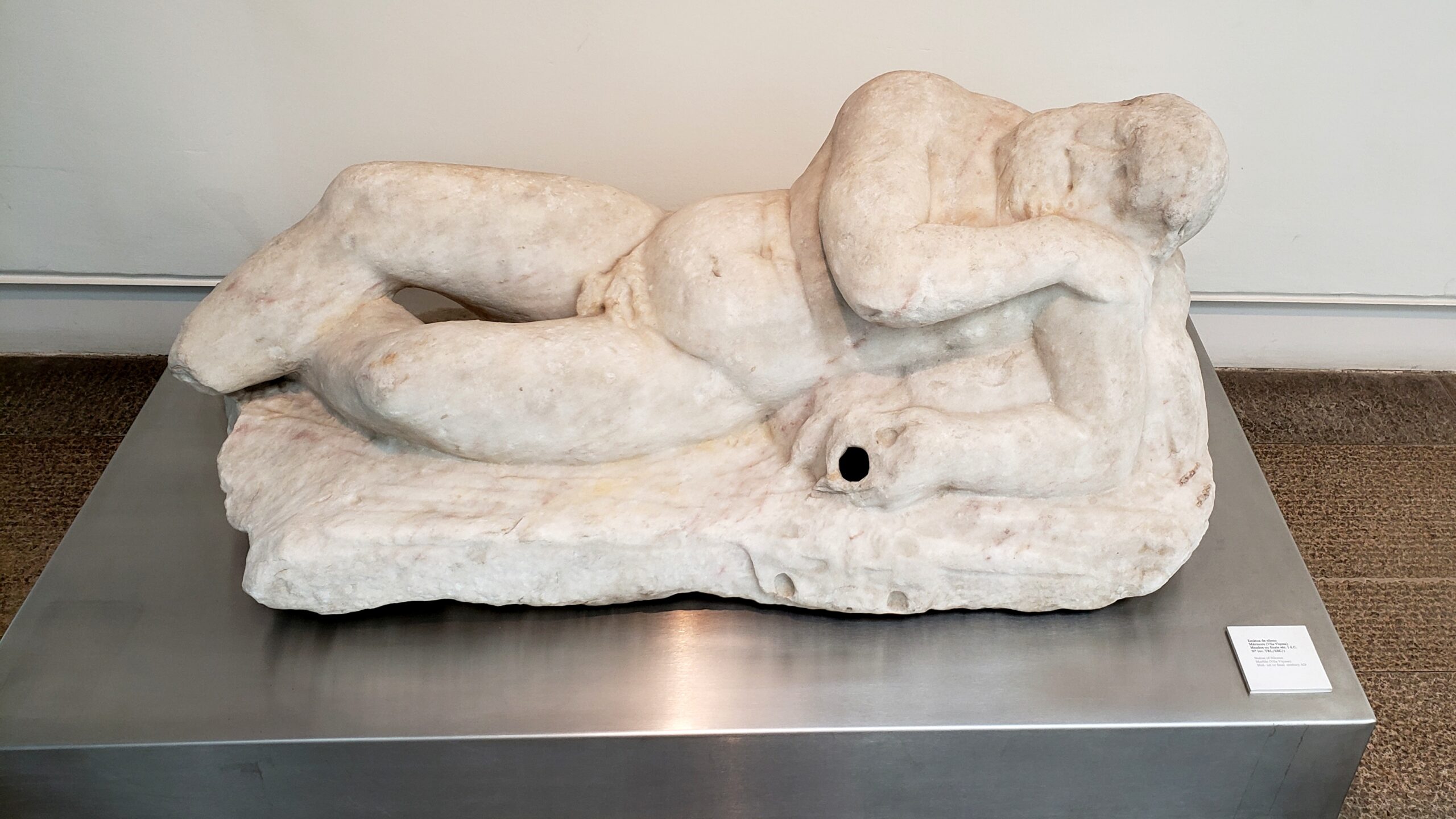
DATELINE…ca 600 to 1147AD Castle
Spectacular vistas over the Tagus River and central Lisbon show why the old city’s highest hill served as a superb defensive fortress for some 1500 years, dating back to the Phoenicians. In the old days, approaching ships, marauding attackers, wandering livestock – all were visible from the old castle.

On this site, with the famous siege of Lisbon in 1147, the Portuguese took control of the country by defeating the Moors. They eventually christened the fortress Sao Jorge, in honor of the archetypal Christian warrior. In the 20th century, after many changes over the years, the walls and towers of the old Moorish castle were restored as we see them today. Though now it’s not the highest point in the city, the views are the main reason to go. Yet it took us three years of visits to Lisbon and the ebbing of the pandemic before we finally climbed the historic summit.
The entrance (and exit) to the Moorish castle from across its moat…
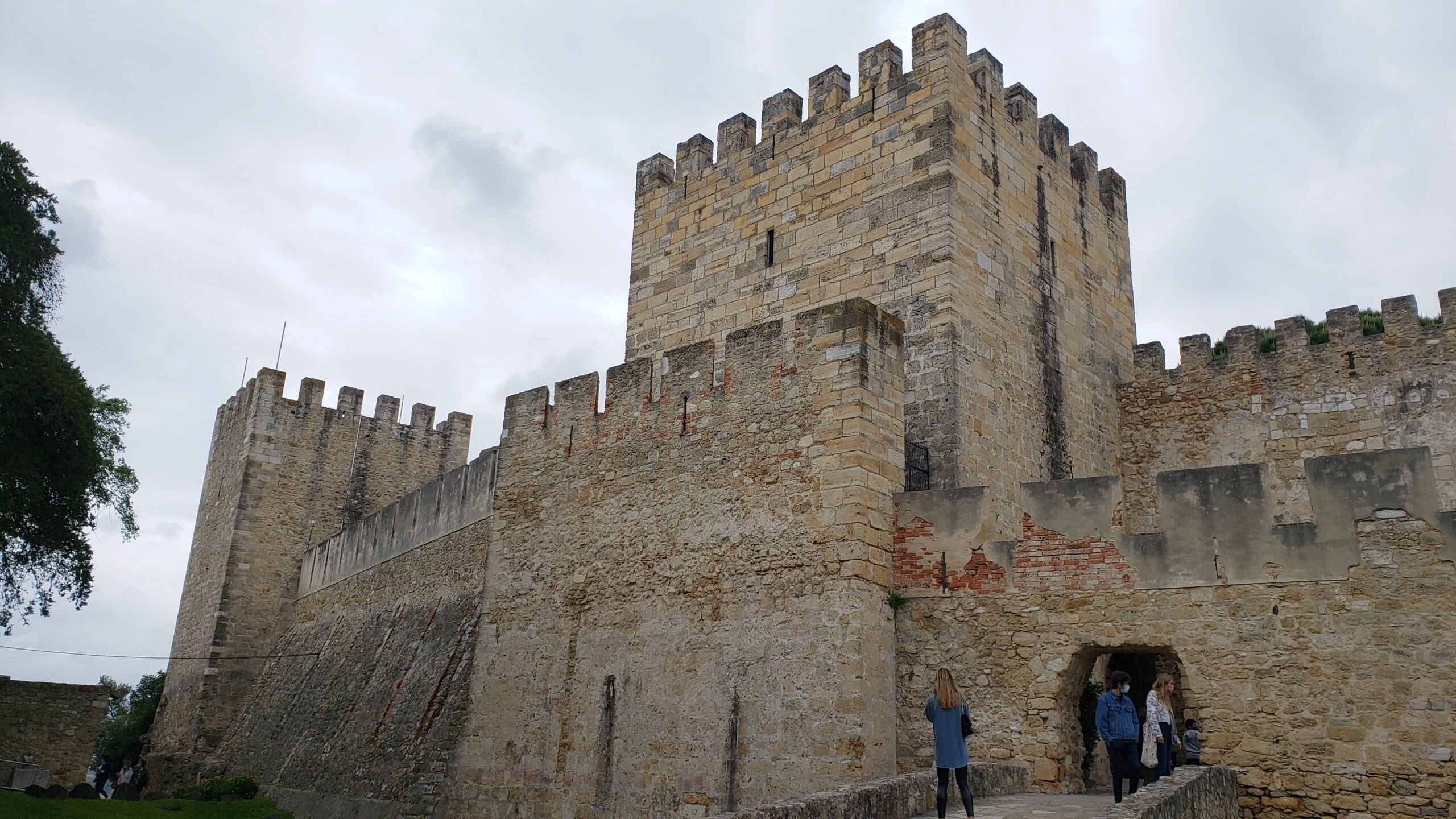
Windswept and chilly, we still were pleased to be here at last
During the historic 12th century siege of the castle, the knight Moniz is said to have sacrificed his life for victory. He threw his body into a doorway to keep a key access point open for his fellow Christian attackers to overwhelm the tower’s defenders.
This staircase descends to a lower defensive platform, high above the Praça named after the knight, Martim Moniz.
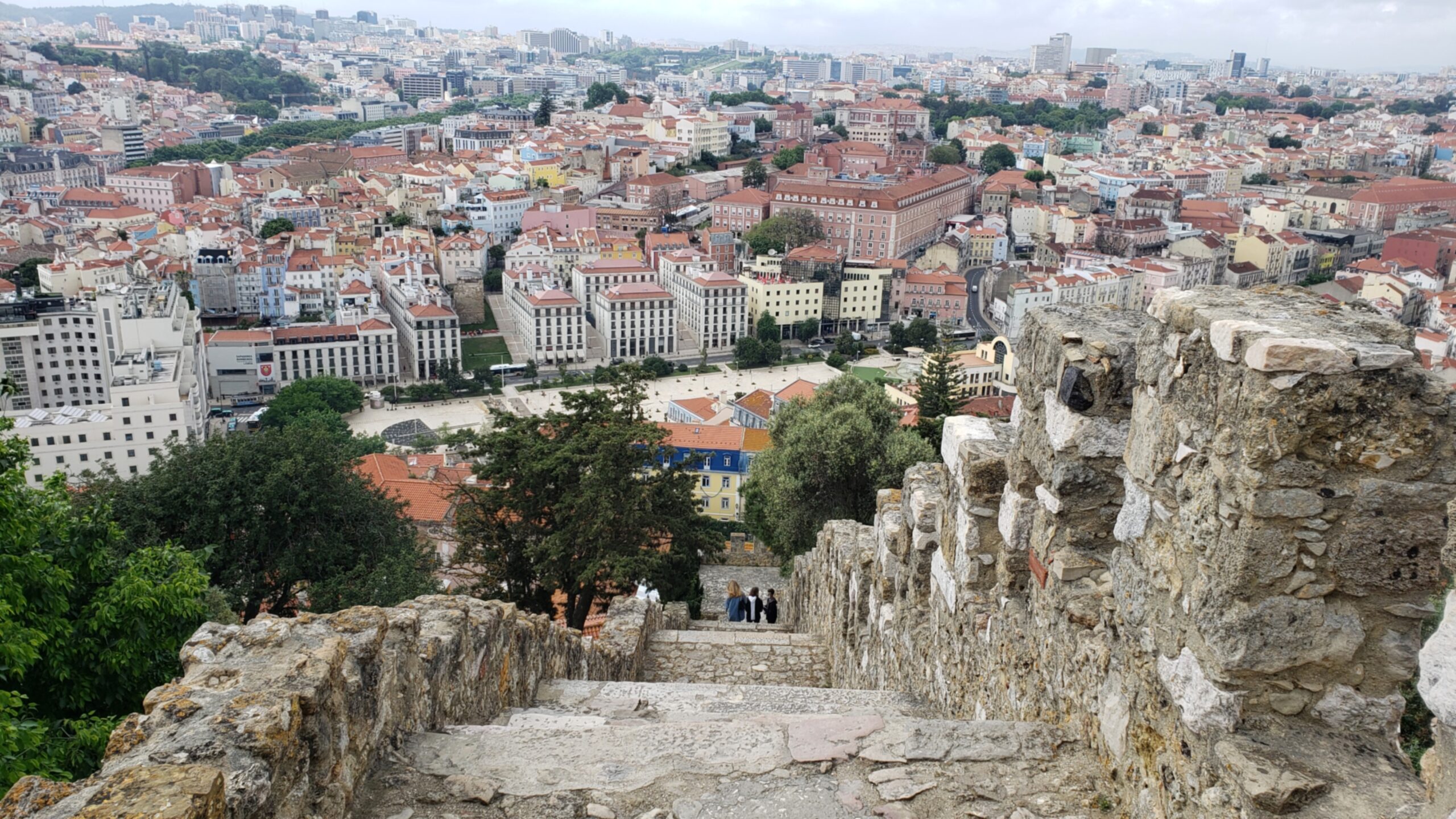
Walkable walls and tower from the Middle Ages, with the backdrop of a charming Baroque church in today’s view.
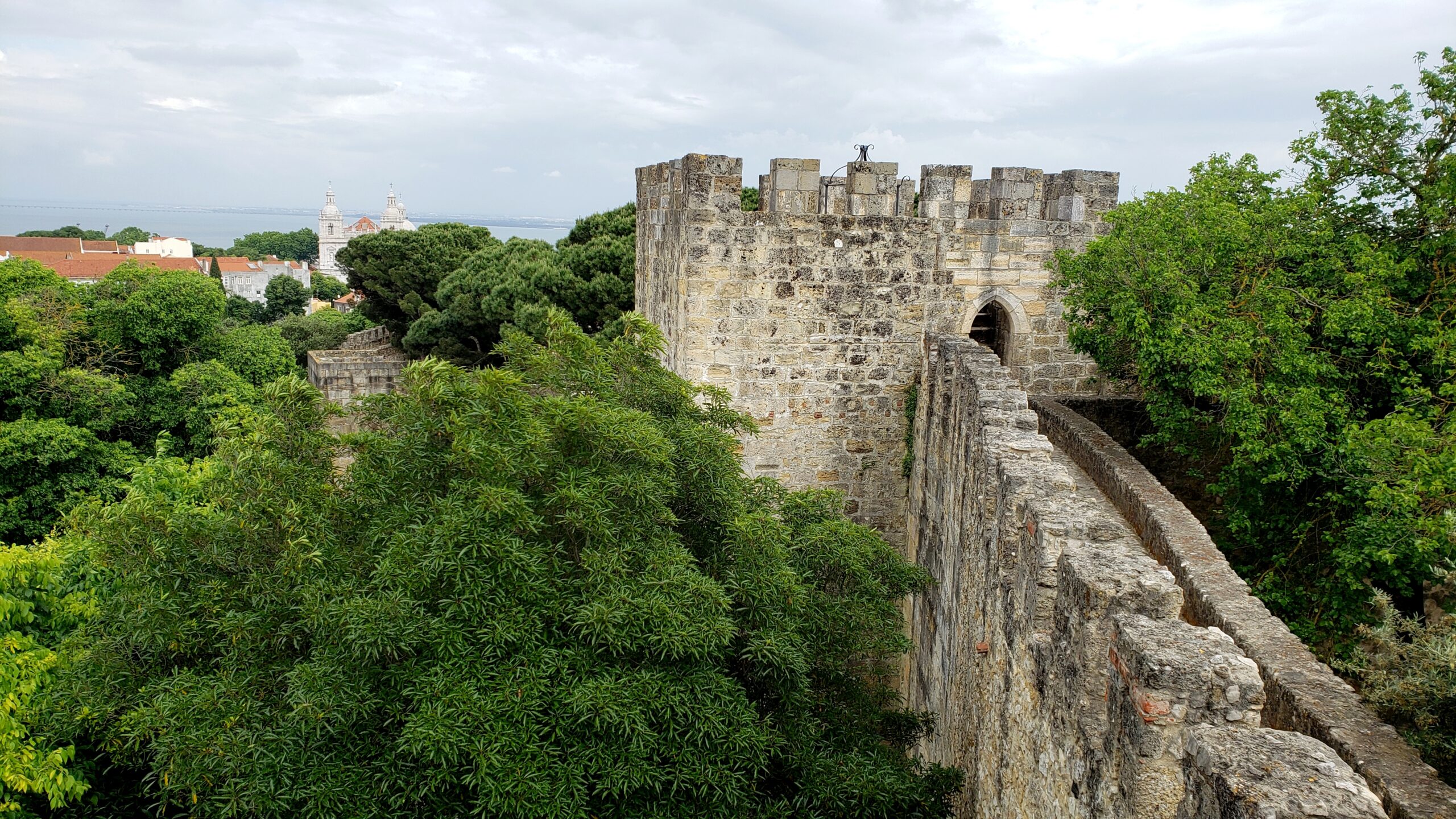
Despite warnings, visitors flock around the peacocks who reside here. The birds seem to know their role and flash their feathers frequently.

This peacock says goodbye to us as we leave. He was not trying to insult us by turning his back on us. Rather he demonstrated that the obverse of a peacock’s display is nearly as lovely as its front.
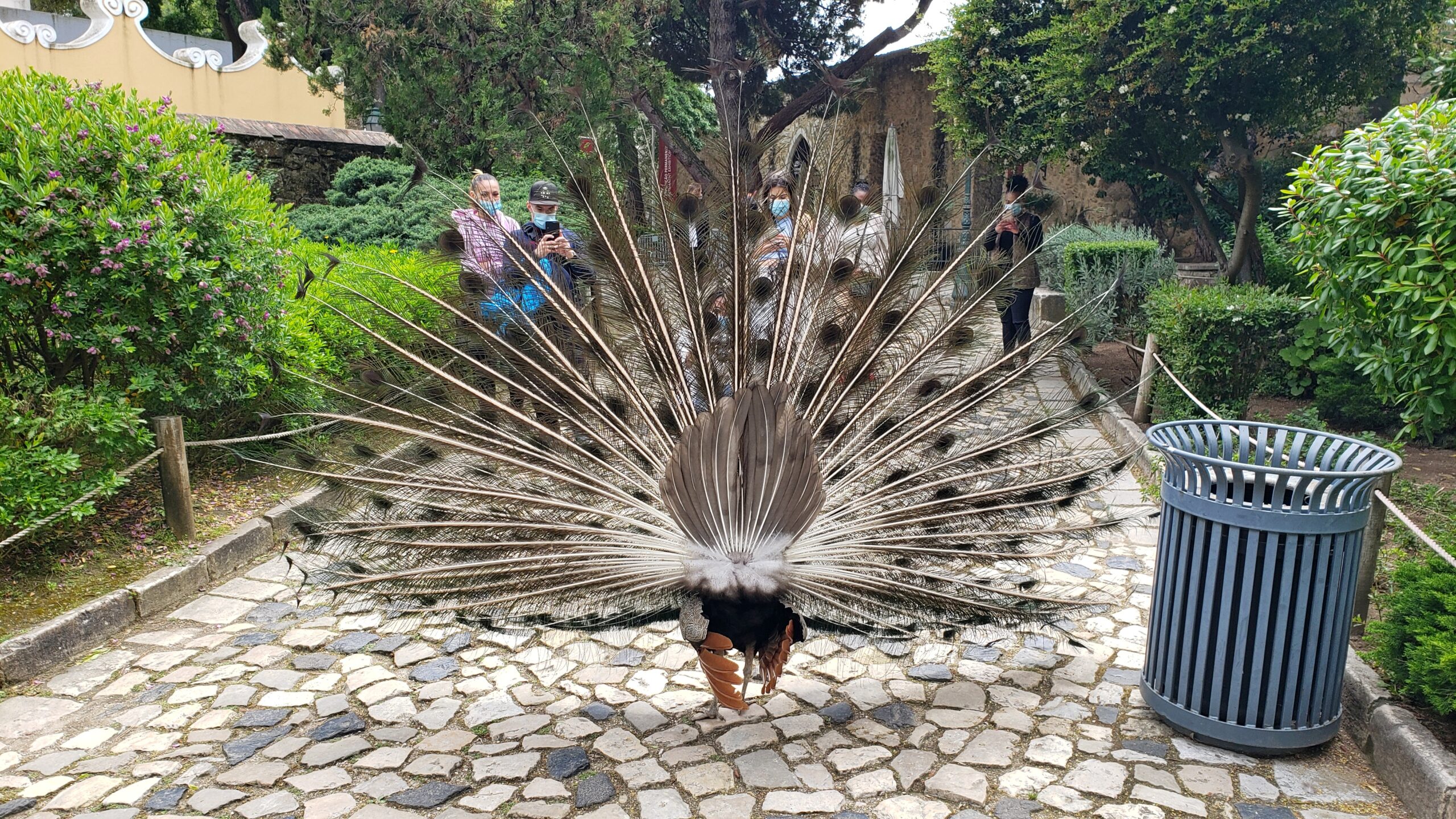
DATELINE…1200 to 1800 AD – The Se and Antonio
Two churches with more than 800 years of history stand close by São Jorge castle. The huge 12th century cathedral, the Se, presents a somewhat austere, but truly impressive interior. The 18th century church of Santo Antonio delights the eye immediately with Baroque detail, notably its elaborate altar.
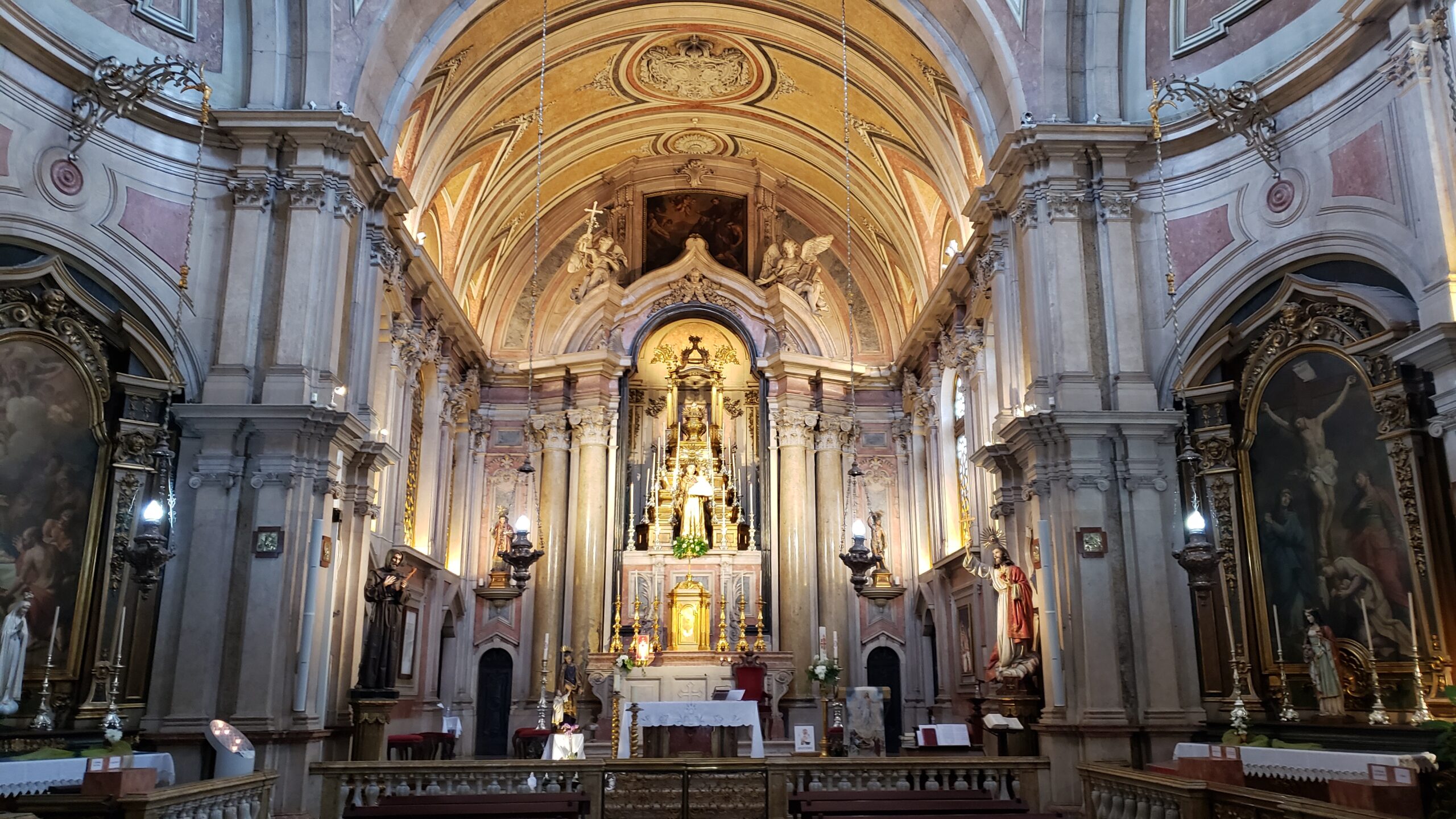
Or the sacristy of Santo Antonio church covered in 18th century tile, which include Masonic symbols.
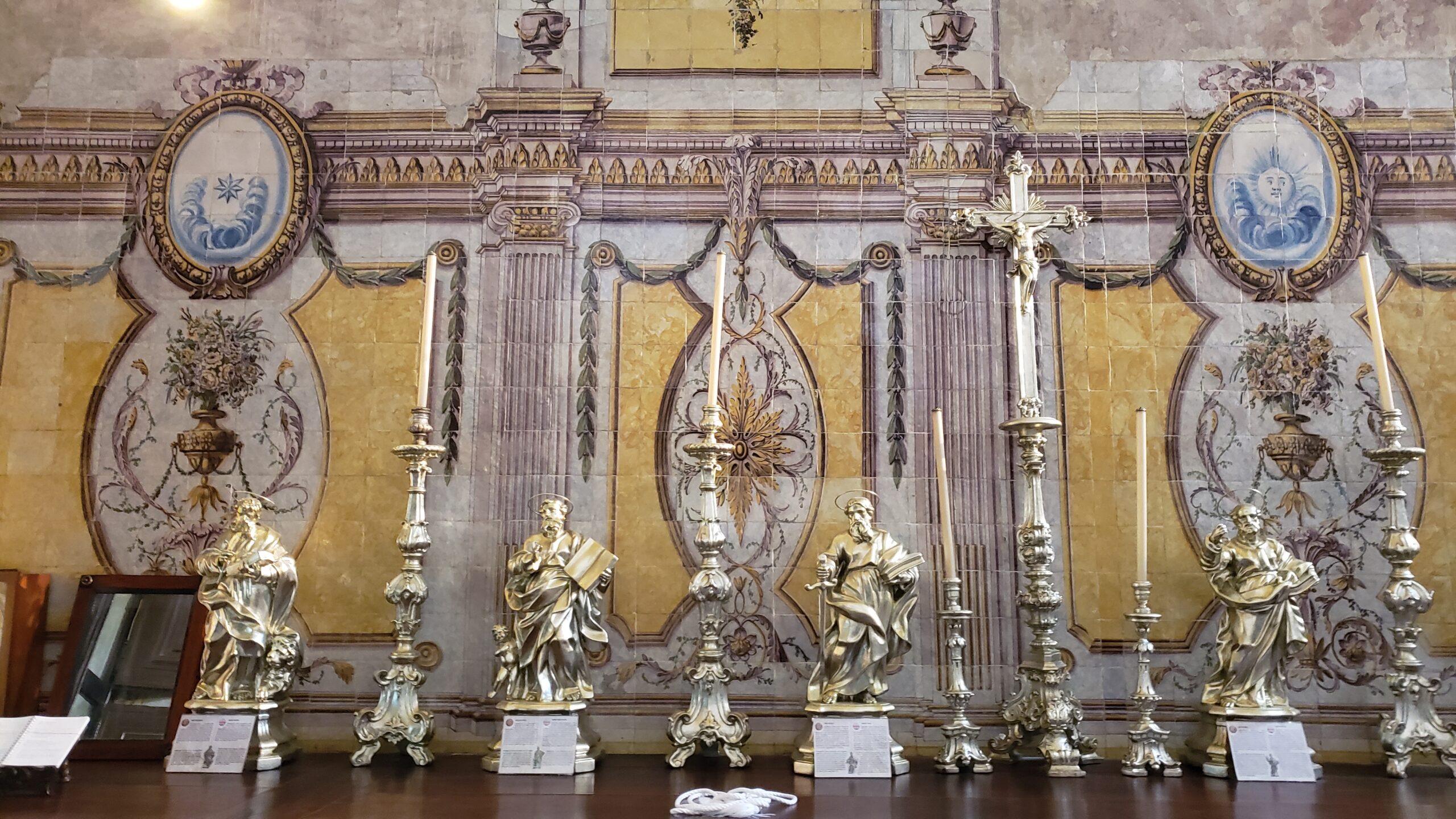
Yet it sits on the 12th century site where the saint was born. Highly revered by the Portuguese, Santo Antonio later made his fame in Padua where – among many acts as a teacher – he preached to fish who accepted his message more eagerly than Italian heretics.
By contrast, the Romanesque exterior of the Sé, the Lisbon Cathedral, looks like a fort because it was intended to act like one if needed.
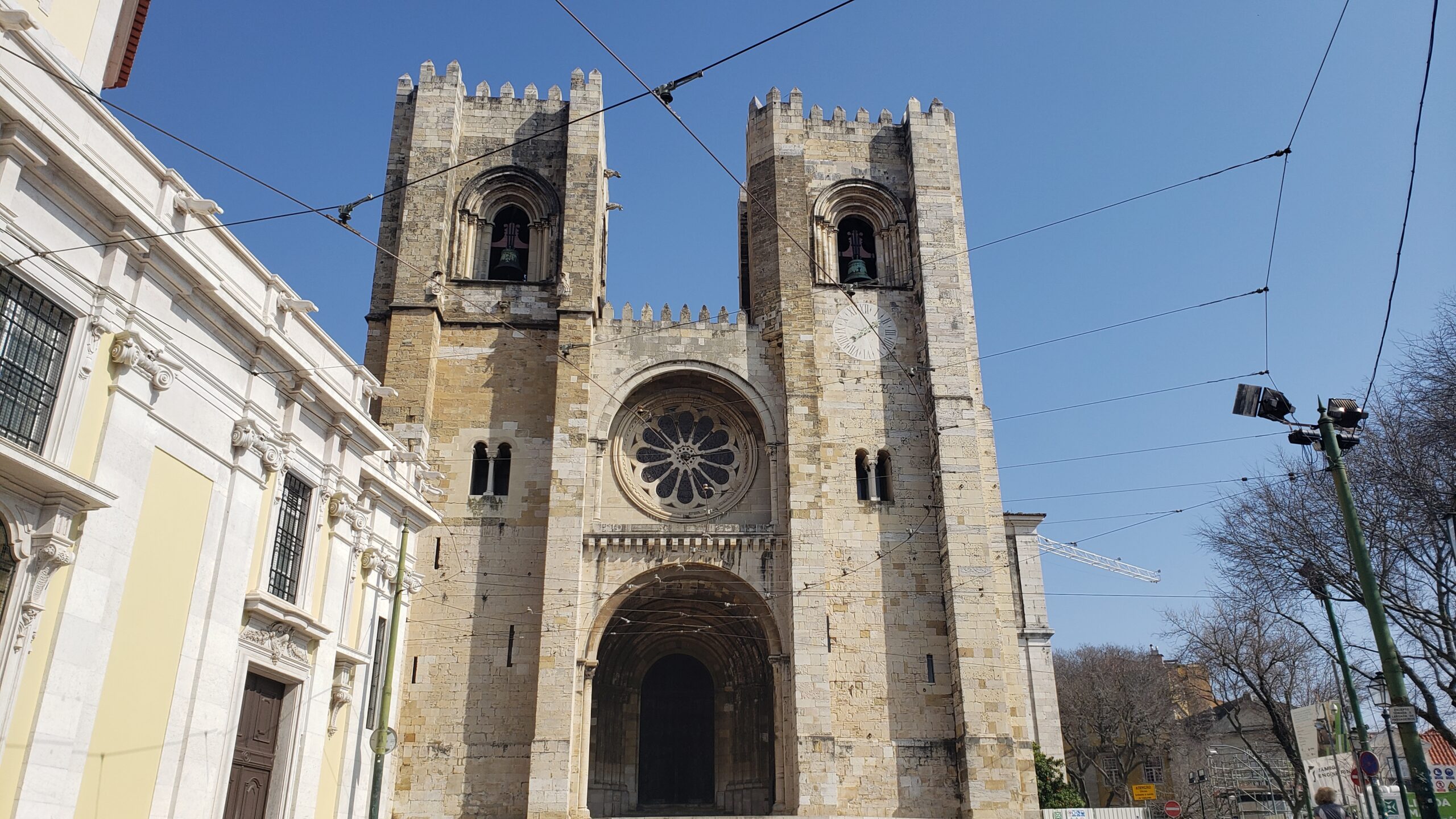
Inside the Sé, a subtle elegance greets the visitor, here viewed from the upper floors of the Cathedral.
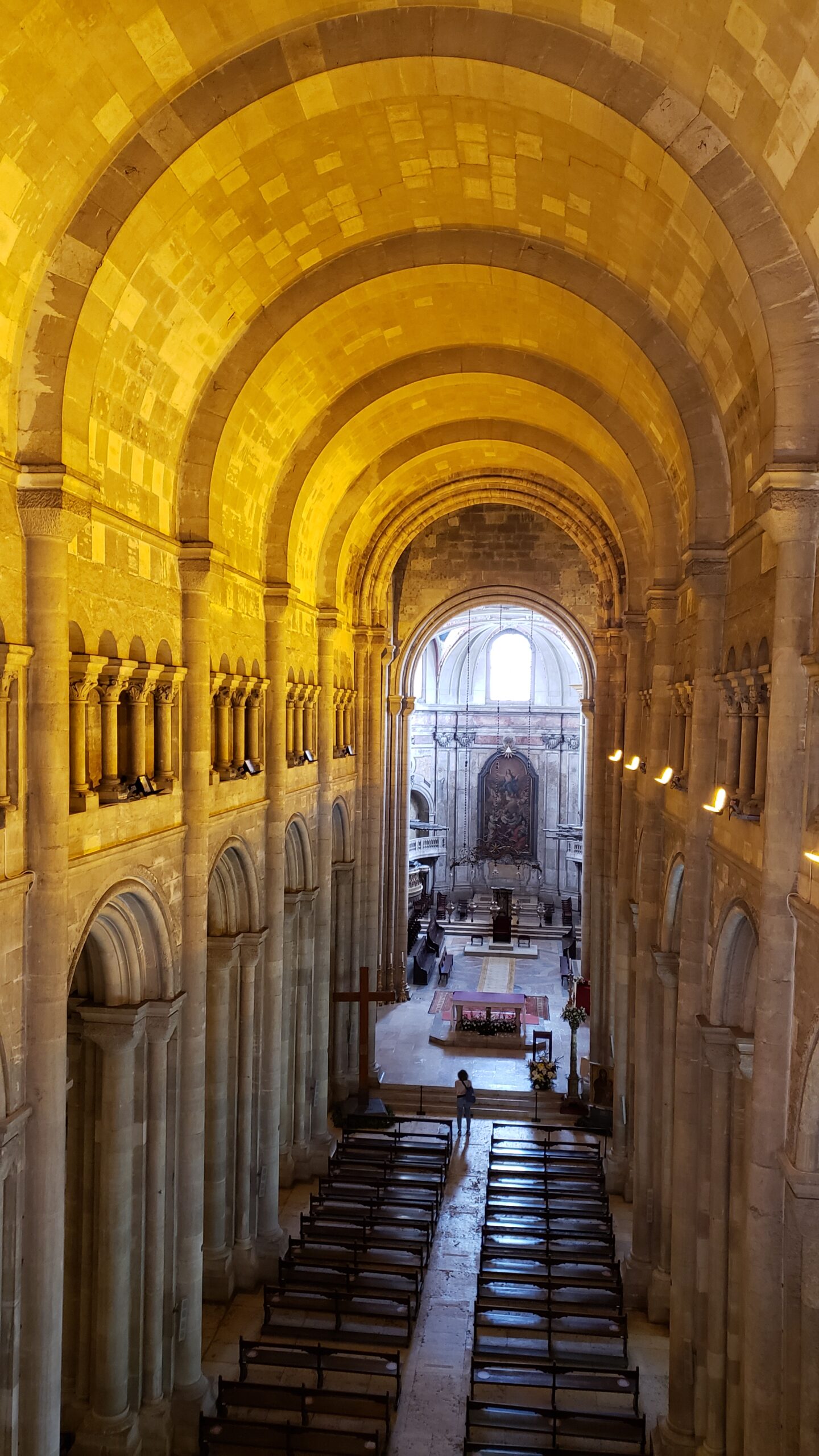
A more modern touch is its reconstructed Rose window (to the right). The 18th century saw updating of the chapel and the upper floors where the museum collection of the cathedral is open to visitors.
An 18th century redesign of its chapel “modernized” the 12th century cathedral (below left), elegantly accenting the architecture.
(Below right) An 18th century room in the museum of the Sé, where many treasures are stored, including a dazzling jewel-encrusted cross and a royal throne topped with feathers (on the left of the photo).
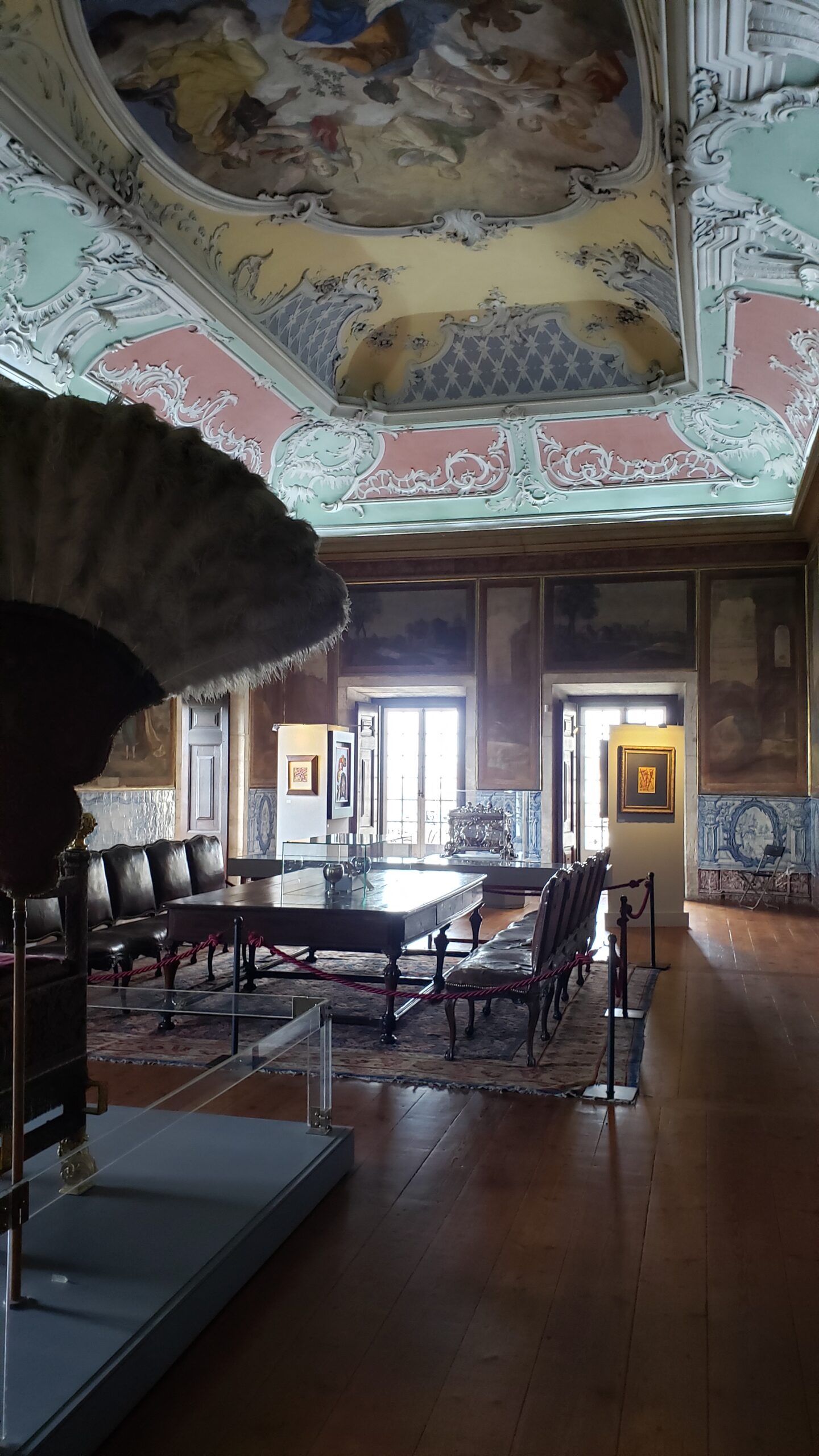
One representation of the symbol of Lisbon in the Sé treasury reminds us of the connection between the medieval church and the 12th century castle: after the defeat of the Moors atop the hill, a ship – guided by two ravens – brought the remains of Saint Vincent to Lisbon for divine protection.
And then, below, a last look backward…A cloister at the rear of the Cathedral collapsed and revealed remains of buildings dating back to the Roman era, and recalled our look at the Roman Theatre. Now archeologists are working hard to make these additional historic layers accessible to visitors.
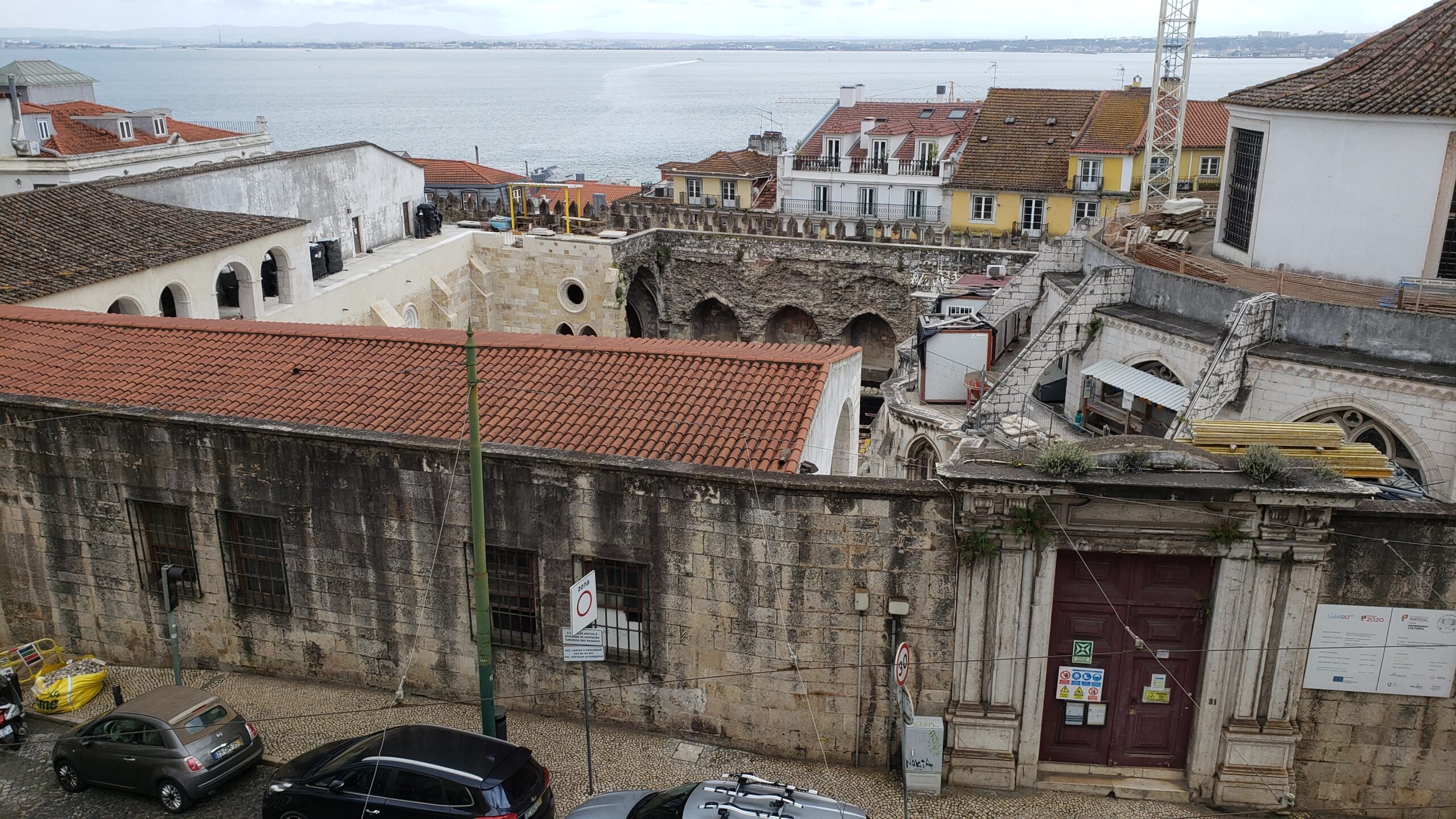
Whether you step out of the churches, passed by electric trams and modern buses, or gaze over baroque and modern Lisbon from the castle, Lisbon’s time machine quickly delivers you back to the present.
(To enlarge any picture above, click on it. Also, for more pictures from Portugal, CLICK HERE to view the slideshow at the end of the itinerary page.)



